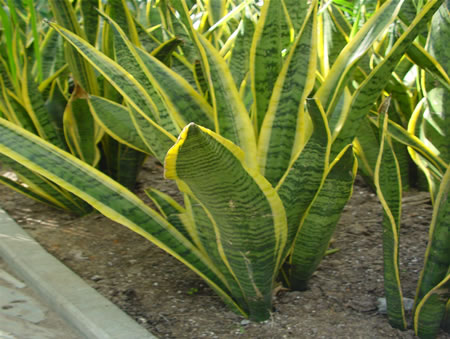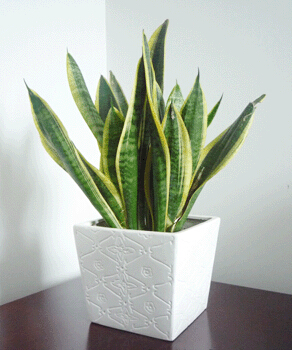Picture explanation of how to raise Tiger Pilan
Many people do not know enough about the breeding methods of Tiger Pilan, resulting in a lot of problems in the breeding process, which is likely to be that our understanding of Tiger Pilan is not comprehensive enough, so how to raise Tiger Pilan? Next, I will take you to learn more about Hu Pilan.

A brief introduction to Tiger Pilan
Tiger skin orchid, also known as tiger tail orchid, brocade orchid, is a plant of the family Orchidaceae, originally from tropical Africa, is a desert plant, home breeding is now very common.
Its leaves are striped, the tiger skin orchid is perennial succulent herb, the rhizome has a creeping feeling, and there are funnel-shaped leaf clusters growing on the rhizome. The leaves are erect, leathery, fleshy, light green, with irregular dark green stripes that resemble the markings on a tiger, which may be why it is called Tiger Pilan. Generally speaking, the plant height of tiger skin orchid is 50 to 70 meters, and the width of leaves is about 3 to 5 meters. In spring and summer, it is the florescence of Tiger Pilan, it will solitary flowers from the rhizome, showing a raceme, a bunch of 3-5 flowers, with a sweet and elegant fragrance.

The species of tiger skin orchid
The common species of tiger skin orchid are Phnom Penh tiger tail orchid, short leaf tiger tail orchid, silver short leaf tiger tail orchid, Phnom Penh short leaf tiger tail orchid, stone pen tiger tail orchid. It can be said that Phnom Penh tiger tail orchid is one of the varieties with high ornamental value, the leaf edge has yellow banded fine stripes, the middle is light green, there are dark green horizontal stripes, looks very beautiful.
Phnom Penh tiger tail orchid: shaped like tiger tail orchid, but the leaf edge is inlaid with a golden broad-spotted band.
Onion leaf tiger tail orchid: also known as pillar leaf tiger tail orchid. The leaf is cylindrical, the whole leaf is about the same thickness up and down, the end is slightly pointed and thin, the leaf surface has a longitudinal shallow groove, and each leaf grows independently.
Magnolia przewalskii: it is a dwarf species with a plant height of about 10 mi 20 m. It is a mutant of Phnom Penh with short and wide leaves and overlapping growth.

The living environment of Tiger Pilan
Tiger Pilan is drought-resistant, moisture-resistant and shade-resistant, and can adapt to a variety of harsh environments. It has no great requirements for fertilizer, and it is best to cultivate it with sandy soil with good drainage. In addition, tiger skin orchid should not grow in dark places for a long time, it should be allowed to receive scattered light, but do not suddenly put tiger skin orchid under the sun. It survives best in an environment of 20-30 ℃, and pay attention to maintaining an indoor temperature of 10 ℃ in winter.

The efficacy and function of Tiger Pilan
1. Hu Pilan can increase the concentration of negative ions in the room.
It can absorb carbon dioxide and release oxygen at the same time, increasing the concentration of negative ions in indoor air. Negative ion is a kind of negatively charged gas ion in the air, which has a very important influence on the life activities of human body and other organisms. The stomata on the fleshy stem of Tiger Pilan are closed during the day and open at night, which can release a large number of negative ions while absorbing carbon dioxide, increasing the concentration of negative ions in the indoor air. Moreover, Tiger Pilan also has an important role in radiation protection, which is suitable for display next to computers and televisions. Therefore, in home apartments, office buildings and other places, Phnom Penh tiger tail orchid has gradually become the preferred environmental protection plant.
2. It can absorb many harmful gases.
Like the hanging orchid, Hu Pilan can absorb more than 80% of the indoor harmful gases, the ability to absorb formaldehyde is even stronger, and is known as the "natural scavenger." At the same time, it can also absorb a large number of radionuclides such as uranium. in addition to removing formaldehyde, it has obvious absorption of harmful materials such as trichloroethylene, hydrogen sulfide, benzene, phenol, hydrogen fluoride, ether, heavy metal particles and so on. transpiration efficiency is high, but also has a certain ability to adjust indoor humidity. Therefore, in the bedroom of 15 square meters, planting 2-3 pots of tiger skin orchid can keep the air fresh. Tiger Pilan has also become an indispensable environmental protection indoor plant in people's modern life.

The fengshui function of Tiger Pilan
Many people say that Tiger Pilan has the fengshui effect of attracting money, which comes from the study of the five elements of plants. The potted Tiger Pilan is placed in the living room. If the door is in the south and the south belongs to fire, then the wooden tiger Pilan wine is very suitable for growing in the living room. It is said that this can regulate the gastrointestinal health of the family.
Tiger Pilan raised on the balcony can increase wealth for the family, in fengshui balcony is the residential breathing place, should be in the balcony to plant exuberant plants, and Tiger Pilan is a kind of tenacious plant, can bring wealth for the family.

How to raise Tiger Pilan
1. The culture method of tiger skin orchid in terms of temperature.
Tiger Pilan likes the warm temperature, the suitable temperature is 18-27 ℃, below 13 ℃, stop growing. The temperature in winter should not be lower than 10 ℃ for a long time, otherwise the base of the plant would rot and the whole plant would die.
2. The culture method of tiger skin orchid. Sunshine.
Tiger Pilan grows well in an environment with plenty of light, and should receive more sunlight in other seasons except to avoid direct sunlight in the middle of summer; if it is placed in the indoor light for too long, the leaves will be dark and lack vitality.
3. The soil aspect of the culture method of tiger skin orchid
Lax requirements on the soil, in a very small soil volume can also grow normally, like loose sandy soil and humus, resistant to drought and barren. The growth is so strong that it does not inhibit its growth even if it is full of pots. Generally, the basin is changed once every two years and carried out in spring. Standard compost can be used when changing the basin.
The fengshui function of Tiger Pilan
Many people say that Tiger Pilan has the fengshui effect of attracting money, which comes from the study of the five elements of plants. The potted Tiger Pilan is placed in the living room. If the door is in the south and the south belongs to fire, then the wooden tiger Pilan wine is very suitable for growing in the living room. It is said that this can regulate the gastrointestinal health of the family.
Tiger Pilan raised on the balcony can increase wealth for the family, in fengshui balcony is the residential breathing place, should be in the balcony to plant exuberant plants, and Tiger Pilan is a kind of tenacious plant, can bring wealth for the family.

How to raise Tiger Pilan
1. The culture method of tiger skin orchid in terms of temperature.
Tiger Pilan likes the warm temperature, the suitable temperature is 18-27 ℃, below 13 ℃, stop growing. The temperature in winter should not be lower than 10 ℃ for a long time, otherwise the base of the plant would rot and the whole plant would die.
2. The culture method of tiger skin orchid. Sunshine.
Tiger Pilan grows well in an environment with plenty of light, and should receive more sunlight in other seasons except to avoid direct sunlight in the middle of summer; if it is placed in the indoor light for too long, the leaves will be dark and lack vitality.
3. The soil aspect of the culture method of tiger skin orchid
Lax requirements on the soil, in a very small soil volume can also grow normally, like loose sandy soil and humus, resistant to drought and barren. The growth is so strong that it does not inhibit its growth even if it is full of pots. Generally, the basin is changed once every two years and carried out in spring. Standard compost can be used when changing the basin.
Related
- Wuhan Hospital Iron Tree Blooming Result Was Instantly Frightened by the Gardener Master
- Which variety of camellia is the most fragrant and best? Which one do you like best?
- What is the small blue coat, the breeding methods and matters needing attention of the succulent plant
- Dormancy time and maintenance management of succulent plants during dormancy
- Minas succulent how to raise, Minas succulent plant pictures
- What are the varieties of winter succulent plants
- How to raise succulent plants in twelve rolls? let's take a look at some experience of breeding twelve rolls.
- Attention should be paid to water control for succulent plants during dormant period (winter and summer)
- Watering experience of twelve rolls of succulent plants
- Techniques for fertilizing succulent plants. An article will let you know how to fertilize succulent plants.



